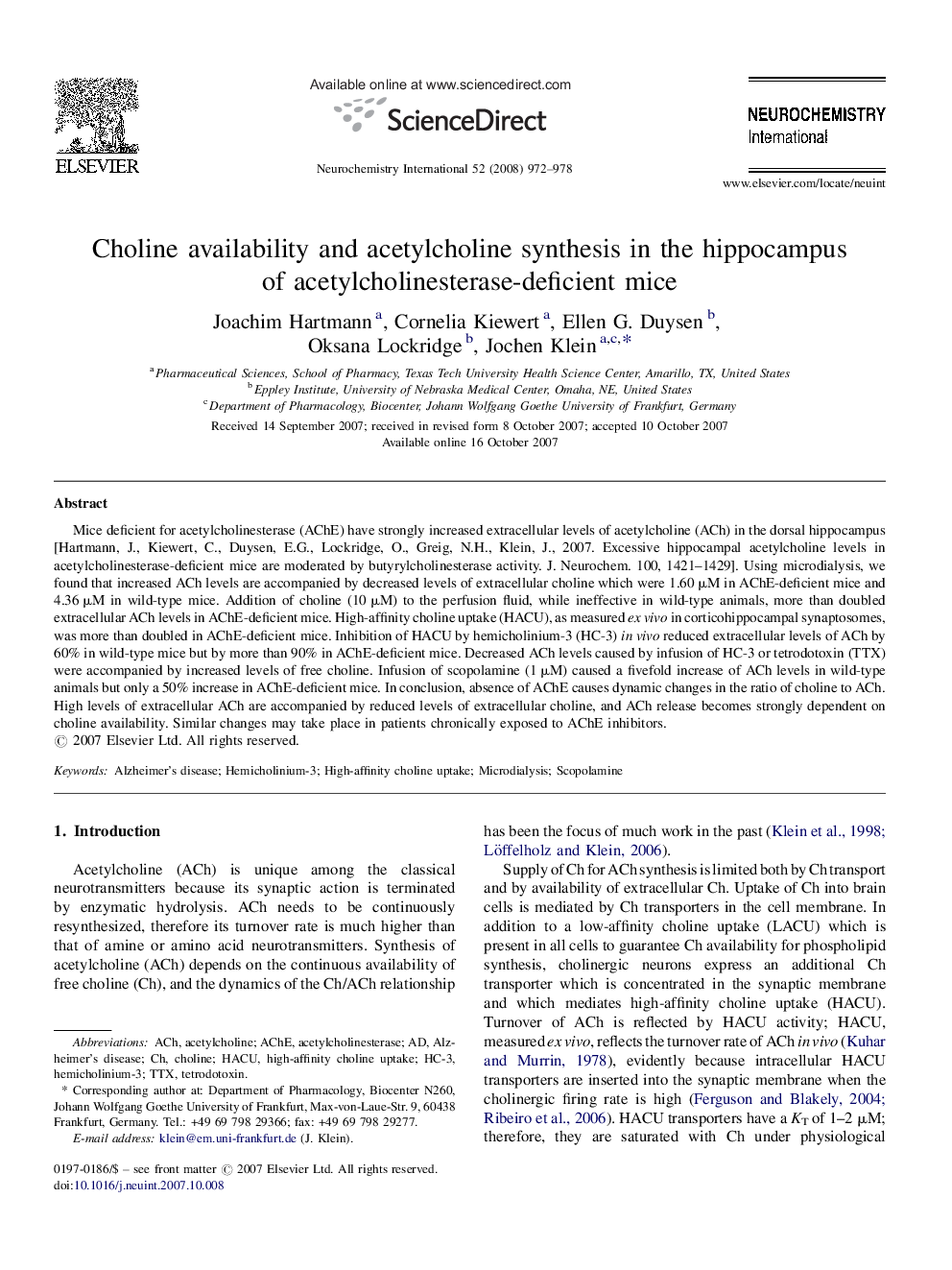| Article ID | Journal | Published Year | Pages | File Type |
|---|---|---|---|---|
| 2201919 | Neurochemistry International | 2008 | 7 Pages |
Mice deficient for acetylcholinesterase (AChE) have strongly increased extracellular levels of acetylcholine (ACh) in the dorsal hippocampus [Hartmann, J., Kiewert, C., Duysen, E.G., Lockridge, O., Greig, N.H., Klein, J., 2007. Excessive hippocampal acetylcholine levels in acetylcholinesterase-deficient mice are moderated by butyrylcholinesterase activity. J. Neurochem. 100, 1421–1429]. Using microdialysis, we found that increased ACh levels are accompanied by decreased levels of extracellular choline which were 1.60 μM in AChE-deficient mice and 4.36 μM in wild-type mice. Addition of choline (10 μM) to the perfusion fluid, while ineffective in wild-type animals, more than doubled extracellular ACh levels in AChE-deficient mice. High-affinity choline uptake (HACU), as measured ex vivo in corticohippocampal synaptosomes, was more than doubled in AChE-deficient mice. Inhibition of HACU by hemicholinium-3 (HC-3) in vivo reduced extracellular levels of ACh by 60% in wild-type mice but by more than 90% in AChE-deficient mice. Decreased ACh levels caused by infusion of HC-3 or tetrodotoxin (TTX) were accompanied by increased levels of free choline. Infusion of scopolamine (1 μM) caused a fivefold increase of ACh levels in wild-type animals but only a 50% increase in AChE-deficient mice. In conclusion, absence of AChE causes dynamic changes in the ratio of choline to ACh. High levels of extracellular ACh are accompanied by reduced levels of extracellular choline, and ACh release becomes strongly dependent on choline availability. Similar changes may take place in patients chronically exposed to AChE inhibitors.
